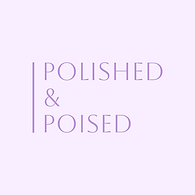Mastering Business Accessories: Tips for a Polished Professional Look
- Nicole Powell
- Nov 7
- 3 min read
Looking sharp in business isn’t just about wearing the right clothes. The accessories you choose can make or break your professional image. Knowing how to accessorize properly helps you project confidence, attention to detail, and style without going overboard. This guide will walk you through practical tips to master business accessories and create a polished, professional look that stands out for all the right reasons.

Choose Accessories That Match Your Industry and Role
Not all business environments require the same level of formality. Accessories should complement your workplace culture and the message you want to send.
Corporate or finance sectors often call for classic, understated accessories like leather belts, simple watches, and minimal jewelry.
Creative fields allow for more personality, such as colorful scarves, unique cufflinks, or statement bags.
Client-facing roles benefit from polished, neutral accessories that convey trustworthiness and professionalism.
Matching your accessories to your industry helps you fit in while still expressing your personal style. For example, a sleek silver watch works well in finance, while a bold patterned tie might be perfect for a marketing professional.
Invest in Quality Over Quantity
A few well-chosen accessories can elevate your look more than many cheap or flashy items. Quality materials and craftsmanship show that you value your appearance and attention to detail.
Choose leather goods like belts, wallets, and briefcases made from genuine leather.
Opt for watches with classic designs and durable straps.
Select jewelry made from precious metals or high-quality alloys that won’t tarnish quickly.
Quality accessories last longer and maintain their appearance, saving you money and effort in the long run. For instance, a well-made leather belt can look sharp for years, while a cheap one may crack or fade quickly.
Keep It Simple and Balanced
Avoid overwhelming your outfit with too many accessories. The goal is to enhance your look, not distract from it.
Limit yourself to two or three accessories per outfit.
Coordinate colors and metals to create harmony.
Use accessories to highlight your best features, such as a watch to draw attention to your wrist or a tie clip to add a subtle touch of style.
For example, pairing a silver watch with matching cufflinks creates a cohesive look without being too flashy. If you wear a statement necklace, skip large earrings to keep the focus clear.
Pay Attention to Details
Small details can make a big difference in how your accessories come across.
Ensure your belt matches your shoes in color and finish.
Keep your watch clean and functioning properly.
Replace worn-out or damaged accessories promptly.
These details show professionalism and care. Imagine a polished outfit paired with scuffed shoes or a frayed belt—it undermines your entire look.
Use Accessories to Express Personality
While professionalism is key, accessories also offer a chance to express your individuality.
Choose subtle patterns or colors that reflect your taste.
Incorporate meaningful items like a family heirloom watch or a custom-made tie.
Experiment with textures, such as a suede belt or a silk pocket square.
This approach helps you stand out without compromising professionalism. For example, a navy suit with a burgundy tie and matching pocket square adds personality while staying business-appropriate.
Consider Functionality and Comfort
Accessories should not only look good but also serve a purpose and feel comfortable.
Select bags and briefcases with enough compartments for your essentials.
Choose watches that fit well and are easy to read.
Pick shoes that support your feet during long workdays.
Functional accessories reduce stress and help you stay organized. A well-designed briefcase can make carrying documents and devices easier, improving your efficiency.
Seasonal and Occasion Adaptations
Adjust your accessories based on the season and specific business occasions.
In warmer months, lighter fabrics and colors work better, such as linen ties or woven belts.
For formal events, opt for classic accessories like cufflinks and silk ties.
During casual Fridays, you might swap a leather belt for a fabric one or wear a more relaxed watch.
Adapting your accessories shows awareness of context and enhances your overall presentation.
Care and Maintenance Tips
Proper care keeps your accessories looking their best.
Clean leather items with appropriate conditioners.
Store watches in protective cases.
Avoid exposing jewelry to water or harsh chemicals.
Regular maintenance extends the life of your accessories and keeps them looking fresh.
Examples of Well-Accessorized Business Looks
A navy suit with a white shirt, brown leather belt and shoes, a silver watch, and a classic or chunky necklace depending on the industry and level
A charcoal gray dress with pearl earrings, a slim leather belt, and a structured handbag.
A tailored blazer with a silk scarf, minimalistic cufflinks, and a classic wristwatch.
These combinations balance style and professionalism, showing how accessories can complete an outfit. There are SO MANY combinations that together we can elevate your wardrobe and your flare.


Comments